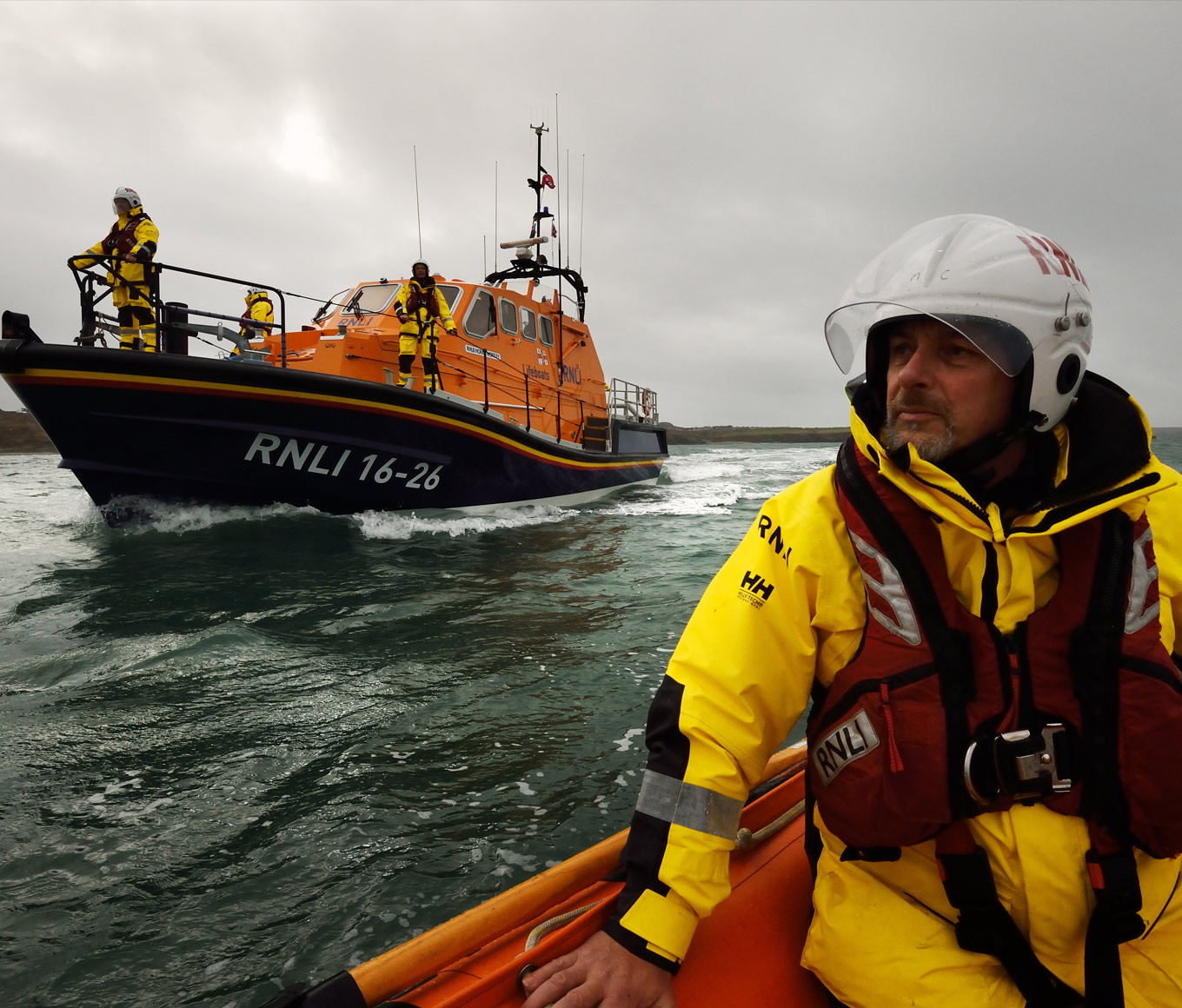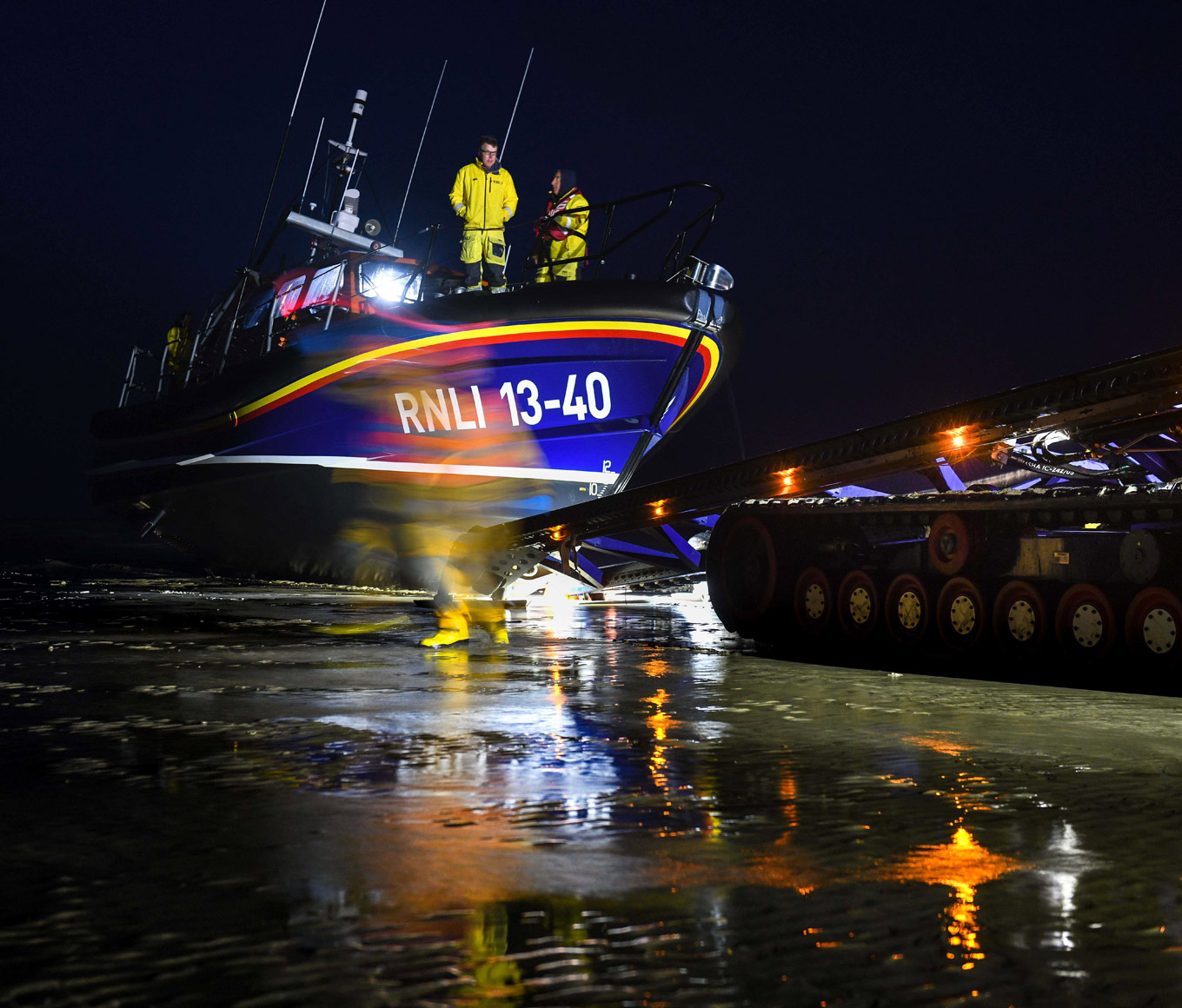
Saving Lives at Sea: Series 8 Episode 5
Discover more about the stories and stations featured in series 8 episode 5 of Saving Lives at Sea, with rescues from Plymouth, Wick, Llandudno and Fraserburgh.
For some families, lifeboating is in their blood. We sat down with Frank Healy and his son Jack – who you might remember from this episode of Saving Lives at Sea – to find out what it’s like to be on the crew with a family member.
Plymouth: Just in time
The episode began with the Plymouth crew launching to a boat that had sunk – with someone still onboard. And they weren’t wearing a lifejacket.
Every second counted.
The volunteers powered to the boat’s last known location and arrived to find a good Samaritan on a fishing boat pulling the sailor out of the water. A crew member quickly went aboard to assess the situation. The sailor was in a stable condition but extremely cold and drowsy after his frightening ordeal.
The crew decided he needed to be taken ashore as soon as possible for proper medical attention, so they moved him from the fishing boat to the lifeboat. They headed back to the station, where an ambulance was waiting for the sailor.
Wick: Stranded photographer
Next, we saw Wick RNLI searching for a photographer stranded on a reef by a rising tide. It was a winter evening and the crew were in near darkness – so they used their search lights, night vision equipment and thermal imaging to help locate him.
When the crew found the man, he was in danger of being washed off the now-submerged reef. The rocky coastline was too shallow for the all-weather lifeboat to get close enough, so the volunteers released their XP boat, a small inflatable dinghy that helps crews access hard-to-reach areas. It wasn’t an easy journey, in darkness and rocky waters, but the two crew aboard finally reached the photographer and got him safely off the rocks.
Llandudno: Father and son
In Llandudno, the volunteer crew powered out to rescue a father and son who were in the water after their kayak capsized.
Before the crew arrived, two kayak instructors had passed the pair and helped the son out of the water. He wasn’t wearing a wetsuit, and was shivering, so they laid him across their own kayaks until help arrived.
When the volunteers spotted the pair, they headed straight for the dad, who was still in the water. They pulled him aboard first, and then the son. They were both very cold, so the crew wrapped them in survival blankets as they headed back to shore. The kayakers both had warm showers back at the lifeboat station before heading home, safe and sound.
Fraserburgh: On the rocks
And finally, in Fraserburgh, the volunteers launched to a fishing boat, with a man onboard, that had lost power. With the tide coming in, the pressure was on to reach the boat quickly.
As they powered to the rescue, the RNLI lifesavers learned the fishing boat had run aground on the rocks. And the man was in the water.
Fifteen minutes later, they reached the fisherman. He was standing on some rocks, stranded – and the tide was still rising. The crew quickly launched their inflatable XP boat so they could safely reach him, skilfully navigating the treacherous rocks. Once they got to the fisherman, they gave him a lifejacket and brought him aboard the XP boat. He was fortunately uninjured, but was showing symptoms of hypothermia. The crew decided to head to a nearby harbour where they could be met by an ambulance. The fisherman was treated for mild hypothermia.
You may also enjoy the following










